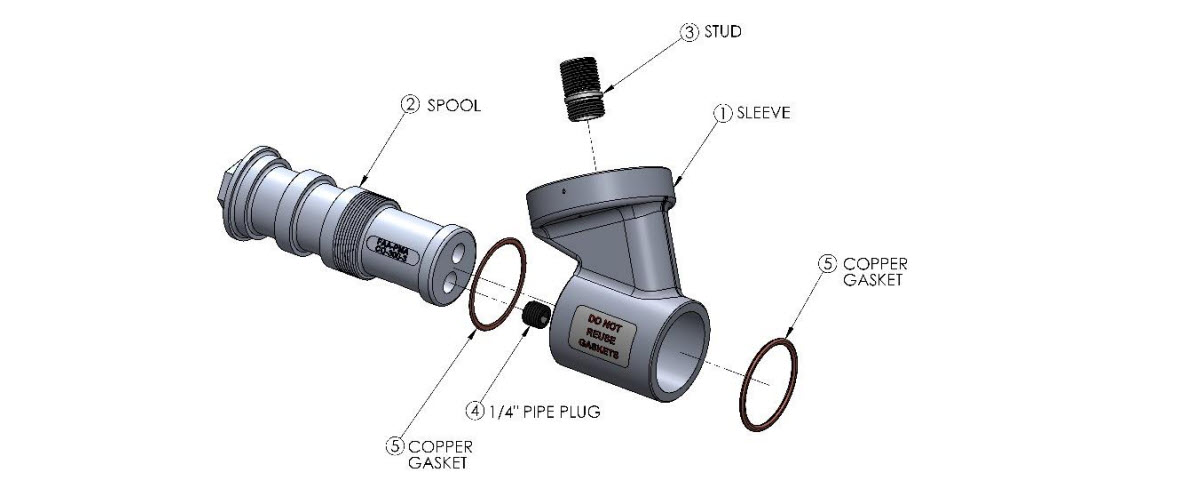The FAA has issued an AD (Airworthiness Directive) requiring owners of certain models of Continental engines to ensure they are not using an oil filter adapter fiber gasket, instead requiring a copper gasket.
[Docket No. FAA-2021-0875; Project Identifier AD-2021-00675-E; Amendment 39-21945; AD 2022-04-04]
RIN 2120-AA64
Airworthiness Directives; Continental Aerospace Technologies, Inc. and Continental Motors Reciprocating Engines
SUMMARY: The FAA is adopting a new airworthiness directive (AD) for certain Continental Aerospace Technologies, Inc. C-125, C145, IO-360, IO-470, IO-550, O-300, O-470, TSIO-360, TSIO-520 series model reciprocating engines and certain Continental Motors IO-520 series model reciprocating engines with a certain oil filter adapter installed. This AD was prompted by reports of two accidents that were the result of power loss due to oil starvation. This AD requires replacing the oil filter adapter fiber gasket (fiber gasket) with an oil filter adapter copper gasket (copper gasket). The FAA is issuing this AD to address the unsafe condition on these products.
There were a variety of “notice of proposed rulemaking” (NPRM), Instructions for Continued Airworthiness, and Service Bulletins related to this topic previous to this AD. It applies to certain Continental Aerospace Technologies, Inc. (Type Certificate previously held by Continental Motors, Inc., and Teledyne Continental Motors)
C-125-1, C-125-2, C145-2, C145-2H, IO-360-C, IO-360-D, IO-360-DB, IO-360-H, IO-360-HB, IO-360-K, IO-360-KB, IO-470-E, IO-470-S, IO-550-B, IO-550-G, O-300-B, O-300-C, O-300-D, O-300-E, O-470-A, O-470-B, O-470-G, O-470-J, O-470-K, O-470-L, O-470-M, O-470-N, O-470-R, O-470-S, O-470-U, O-470-11, O-470-15, TSIO-360-E, TSIO-360-EB, TSIO-360-F, TSIO-360-FB, TSIO-360-GB, TSIO-360-LB, TSIO-360-MB, TSIO-360-SB, TSIO-520-C, TSIO-520-CE, TSIO-520-E, TSIO-520-UB model reciprocating engines; and Continental Motors (Type Certificate previously held by Teledyne Continental Motors) IO-520-A, IO-520-B, IO-520-BA, IO-520-BB, IO-520-C, IO-520-D, IO-520-J, and IO-520-L model reciprocating engines.
The NPRM was published in the Federal Register on October 12, 2021.
The NPRM was prompted by reports of two accidents that were the result of power loss due to oil starvation. The first was a fatal accident on May 1, 2019, in Mill Creek California, involving a Cessna 182P airplane with an installed Continental Motors O-470-S engine. The National Transportation Safety Board’s preliminary accident investigation report, docket number WPR19FA126, identified evidence of improperly maintained or installed oil filter adapters. An improperly maintained or installed oil filter adapter may lead to failure of the fiber gasket, which may result in oil loss or oil starvation. Based on the investigation, the manufacturer determined the need to replace the fiber gasket with a copper gasket. In the NPRM, the FAA proposed to require removal of the fiber gasket and replacement with a copper gasket. The FAA is issuing this AD to address the unsafe condition on these products.
The FAA is requiring the following:
Required Actions
Before accumulating 50 flight hours after the effective date of this AD or at the next scheduled oil change after the effective date of this AD, whichever occurs first, remove any F&M or Stratus oil filter adapter fiber gasket from service and replace it with a Stratus AN900-28 or AN900-29 oil filter adapter copper gasket.
After the effective date of this AD, do not install or reuse an F&M or Stratus oil filter adapter fiber gasket in any F&M or Stratus Tool Technologies oil filter adapter.
The rest of this article can be seen only by paid members who are logged in.Members can log in and download the full AD. Also downloadable below are a PDF containing Instructions for Continued Airworthiness, and another PDF of a Service Bulletin, both issued by Stratus in the Summer of 2021.
Have a website login already? Log in and start reading now.
Never created a website login before? Find your Customer Number (it’s on your mailing label) and register here.
Still have questions? Contact us here.





